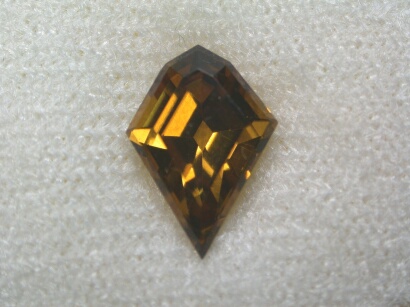
Vessuvianite, GIA11631
Department of Geography and Geosciences
University of Louisville, Louisville, Kentucky 40292, U.S.A.
Research Reactor Facility, University of Missouri, Columbia, Missouri 65211, U.S.A.
Division of Geological and Planetary Sciences,
California Institute of California
Pasadena, California 91125, U.S.A.
Laboratory for Chemical and Mineralogical Crystallography, University of Bern, CH-3012 Bern, Switzerland
IPNS Division, Argonne National Laboratory, Argonne, Illinois 60439, U.S.A.
|
Vessuvianite, GIA11631 |
The crystal structure of a large crystal (11.0 x 7.8 x 4.7 mm) of gem-quality Fe-bearing vesuvianite [a=15.533 (11), c=11.785(16) Å, V=2843(5) Å3, e=1.713(5), w=1.710(5), 2V= 0°(5); D=3.43 g cm-3; 3.68 wt% FeO] from Kenya has been refined at 298 K by single-crystal neutron-diffraction methods to a weighted R value of 3.9% for 1448 unique Bragg reflections. No violations of P4/nnc space-group symmetry were observed on examination of the crystal by time-of-flight neutron methods. The protons are associated with oxygen atoms O(11) [H(1) 0.4592(7), 0.4814(9), 0.3083(8)] and 0(10) [H(2) 0.25, 0.25, 0.280(10)] as predicted by bond-valence calculations. Difference-Fourier maps show a double minimum between adjacent O(10) atom: along c, indicating a statistical distribution of H(2) between two sites. The partial occupancy of the H(l) site (85%) is consistent with the substitution of fluorine for oxygen at the O(11) site. Although hydrogrossular and vesuvianite have similar structures and occur in many of the same environments, the neutron-diffraction results rule out the possibility of a hydrogarnet-type substitutior (O4H4)4- = (SiO4)4- in this specimen. Its infrared spectrum (6500-7500 cm-1) most closely resembles that of intermediate-fluorine, boron-poor vesuvianite.
The Canadian Mineralogist Vol. 37, pp. 763-768 (1999)